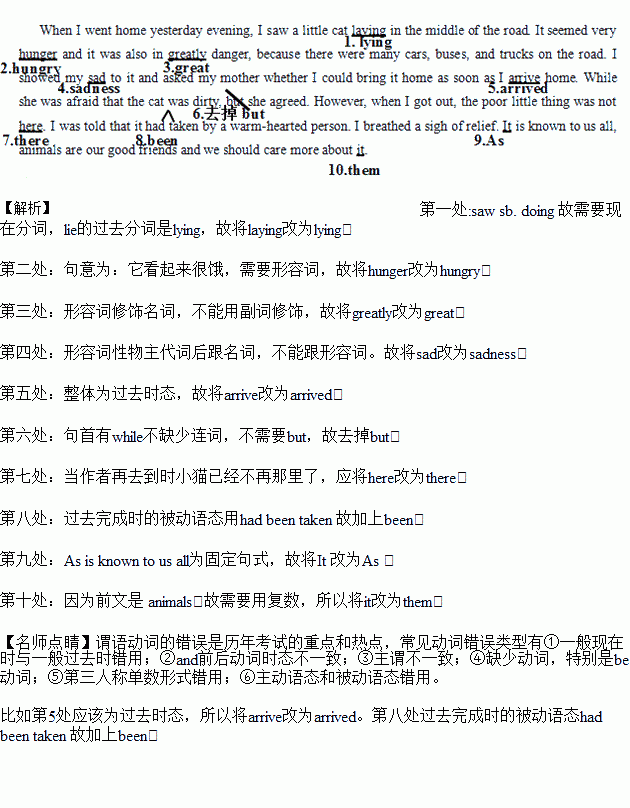��Ŀ����
�ٶ�Ӣ�������ʦҪ��ͬ��֮�佻�������ģ���������ͬ��д�����ġ����й���10���������漰һ�����ʵ����ӡ�ɾ�����ġ�
���ӣ���ȱ�ʳ���һ��©�ַ��ţ�/\��������������д���üӵĴʡ�
ɾ�����Ѷ���Ĵ���б�ߣ�\��������
�ģ��ڴ��Ĵ��»�һ���ߣ����ڸô�����д���ĺ�Ĵʡ�
ע�⣺1. ÿ���������ľ�����һ�ʡ�
2. ֻ������10�������ߣ���11���𣩲��Ʒ֡�
When I went home yesterday evening, I saw a little cat laying in the middle of the road. It seemed very hunger and it was also in greatly danger, because there were many cars, buses, and trucks on the road. I showed my sad to it and asked my mother whether I could bring it home as soon as I arrive home. While she was afraid that the cat was dirty, but she agreed. However, when I got out, the poor little thing was not here. I was told that it had taken by a warm-hearted person. I breathed a sigh of relief. It is known to us all, animals are our good friends and we should care more about it.
 ��������һ���þ�ϵ�д�
��������һ���þ�ϵ�д� Сѧ��10����Ӧ����ϵ�д�
Сѧ��10����Ӧ����ϵ�д�
